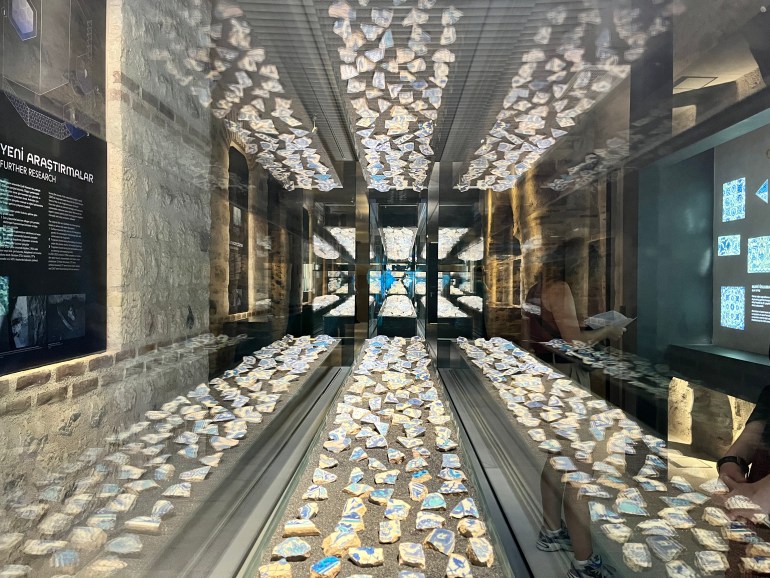Healing Ruins explores cleansing, rebirth in a 14th century Turkish hamam | News
Istanbul, Turkey – On a hill close to the heart of Istanbul’s UNESCO World Heritage-listed Zeyrek district stands Cinili Hamam, a 500-year-old Turkish bathhouse whose unbroken history stretches back to the heights of the Ottoman Empire and the time of its legendary naval commander, Hayreddin Barbarossa.
Commissioned by the Grand Admiral and built by renowned architect Mimar Sinan around 1530, the so-called “Tiled Bathhouse” was a pinnacle of architectural splendour and sophistication in the city, famous for its distinctive blue and white Iznik tiles.
The intervening centuries had not been kind to the long-forgotten marvel. As the Ottoman Empire gave way to the increasingly Westernised Turkey of the 18th and 19th centuries, sensibilities moved away from older traditions, such as hammams, causing many – including Cinili Hamam – to fall into disrepair.
Many of its fixtures – including its eponymous tiles – were stripped away to be sold to international museums and private collectors, leaving behind a hollow shell.
Now, after a long and ambitious 13-year restoration effort, this lost treasure has been revitalised through the efforts of the Marmara Group and is once more a place of cleansing and relaxation, but also one that reflects much of Turkey’s hidden history.
What was originally intended to be just another luxury bathhouse has evolved substantially, embracing Turkey’s rapidly expanding artistic scene as a new arts venue, including an on-site museum furnished with artefacts uncovered during the reconstruction effort.
“We didn’t know any of the stories as we started the excavations and the renovation process,” founding director, Koza Yazgan, told Al Jazeera. “We found the Byzantine cisterns underneath. All the objects that we found – all the tile fragments, and other Byzantine and Roman artefacts, some of which date back to the 5th century – take us through 1,500 years.”
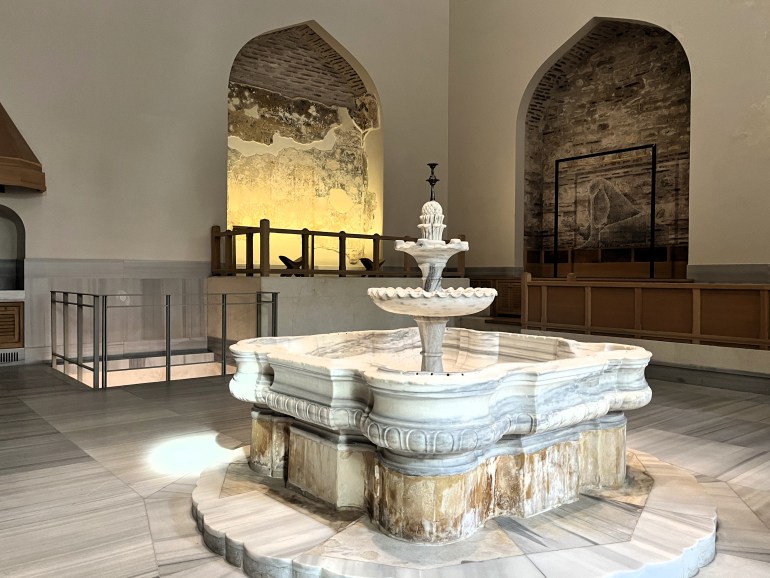
To mark the conclusion of the restoration work, Marmara Group and curator Anlam de Coster have created a special, one-off art show, hosted within the bathing areas of the complex. Titled Healing Ruins, it features works by 22 local and international artists around themes of personal and societal transformation.
The phrase “healing ruins” carries multiple meanings, suggesting that purification, creation and repair can only be achieved through a challenging process, much like the cleansing rituals of the hammam. Not only are these ruins healing themselves; the act of rebuilding – both here and elsewhere – can have a transformative effect upon those undertaking the task.
For de Coster, just entering the hammam was enough to trigger a release of the senses, allowing each to merge with the other.
“All these elements – fire, earth, air and water – exist within this sanctuary. We think first that water must be the essential element – for purification and cleansing – but, without fire, hammams cannot exist. Fire can be destructive, but one can also build things with fire. It takes away the old and ushers in the new.”
“There are a variety of mediums used in the exhibition that relate to the four elements,” she continued. “On top of that, there is the more esoteric, more alchemical reference of the four elements that have existed since the dawn of time. The artists in the women’s section especially refer a lot to those rituals of alchemical transformation.”
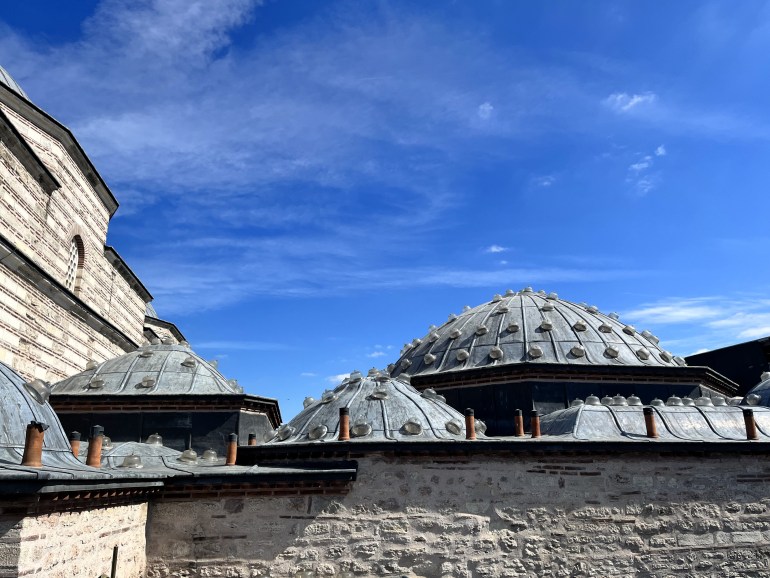
The women’s section of the hammam is dominated by three towering pillars from the French sculptor Marion Verboom’s Tectonie series. Featuring elements and symbols representing different cultures from across history – the Greek Omphalos, a caryatid, a honeycomb pattern from the capital of Rome, an Etruscan representation of the uterus – the columns serve as a perfect anchor for a collection reflecting the weight of time.
“My studio practice gets me very involved with glass, plaster, resins, concrete, ceramic; all materials that go from soft or liquid to hardness with catalysis or firing,” said Verboom. “Matter has its own schedule, which I am dedicated to … Matter also gives me a sense of time and history,” she added.
“This feeling is very vivid in the Cinili Hamam. All creations of time by layers accumulated are a source of astonishment and give me the desire to create. I must research and assemble, rather than create a form from nowhere.”
The exhibition also includes 12 new site-specific commissions, each created in response to the hammam. These include sculptures, paintings, drawings, photography and installations; each a continuation of their creator’s unique methodology and perspective and inspired by their own visits to Cinili Hamam.
Turkish designer Ezgi Turksoy’s ceramic installation piece, entitled A Floor Talisman, takes the form of a ring of bright white, porcelain seashells arranged on the flagstones. By tapping into elements of classical mysticism, she aims to reflect the hammam’s nature as a place of personal refuge and renewal.
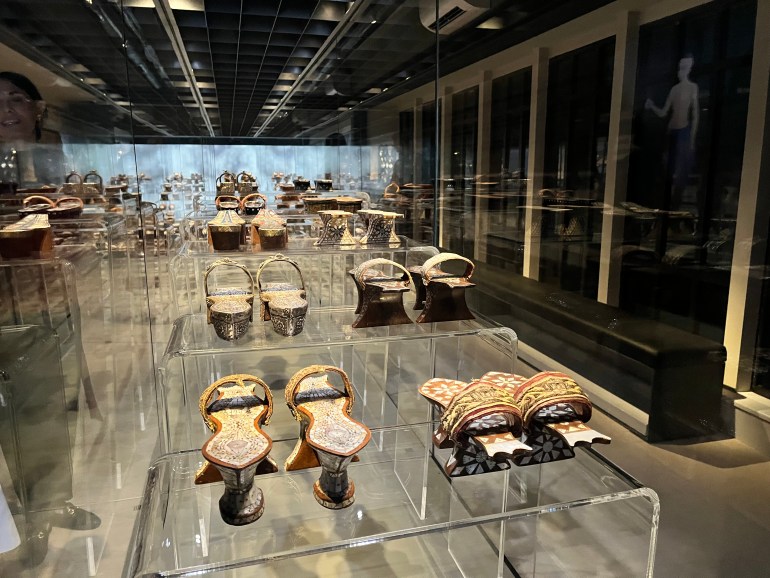
“The circle has a lot of meaning and symbolic value in esoteric cultures and traditions,” explained Turksoy. “There is no beginning. There’s no end. It represents birth and continuity. It represents divinity. For me, all that really came together with the history of this building, because this building went through a lot.”
“A circle can also represent a portal, or a safe boundary,” she added. “In esoteric traditions, you build a circle around yourself, and that creates a boundary that you set between yourself and what’s outside; a safe realm that you create for yourself, in which to heal. I’m also obsessed with seashells; one thing that I really like about them – in terms of the symbolic value – is that it’s a thing that this little creature creates to protect itself. It’s hard, but it’s fragile.”
Once Cinili Hamam resumes operation as a fully functioning bathhouse – currently planned for March 2024 – the complex will continue to host a programme of art events, cementing it as a cultural hub, with its rooftop garden and the repaired underground Byzantine cisterns making for a unique exhibition space within the ancient city.
At the same time, great pains have been taken to ensure that the historical details of the hammam remain preserved and visible. Fragmented layers of plaster have been cleaned up but otherwise left intact, exposing the different generations of historical murals.
Elements of the original floor tiles have been left in situ and incorporated into new flooring. An entire underground support structure has been excavated to make room for the modern equipment for the hammam’s water supply to keep the Byzantine cisterns free of modern machinery.
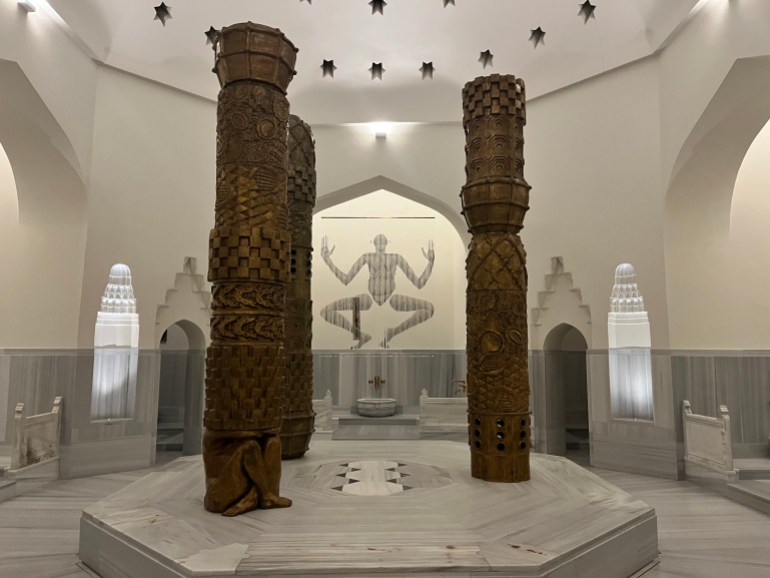
Visitors can view the archaeological artefacts on display at the hammam’s in-house museum, designed by Atelier Bruckner, the centrepiece of which is a collection of about 3,000 Iznik tile fragments, representing the 37 unique designs that once decorated the inner walls.
The museum also provides an insight into the baths’ incredibly sophisticated water and heating systems along with interactive experiences that allow guests to explore a virtual reconstruction of Cinili Hamam, as it was at its height in the 16th century, along with a vast collection of objects associated with Turkish hammam culture.
“With the excavations in and around the bath, we found so many tile fragments and other artefacts,” explained construction and projects director, Yavuz Suyolcu. “Normally, when you find an artefact it just goes to the government. But – since it was a tile bed and we found so many tile fragments – we began thinking about exhibiting them in place.
“We decided to build a museum next to the hammam to exhibit all these artefacts, as well as to give a deeper understanding to people about the history of bathing culture,” said Yazgan. “We’re also working with archaeology museums. They control what we do, how we document and where we put everything, but our in-house archaeologists do the work.”
